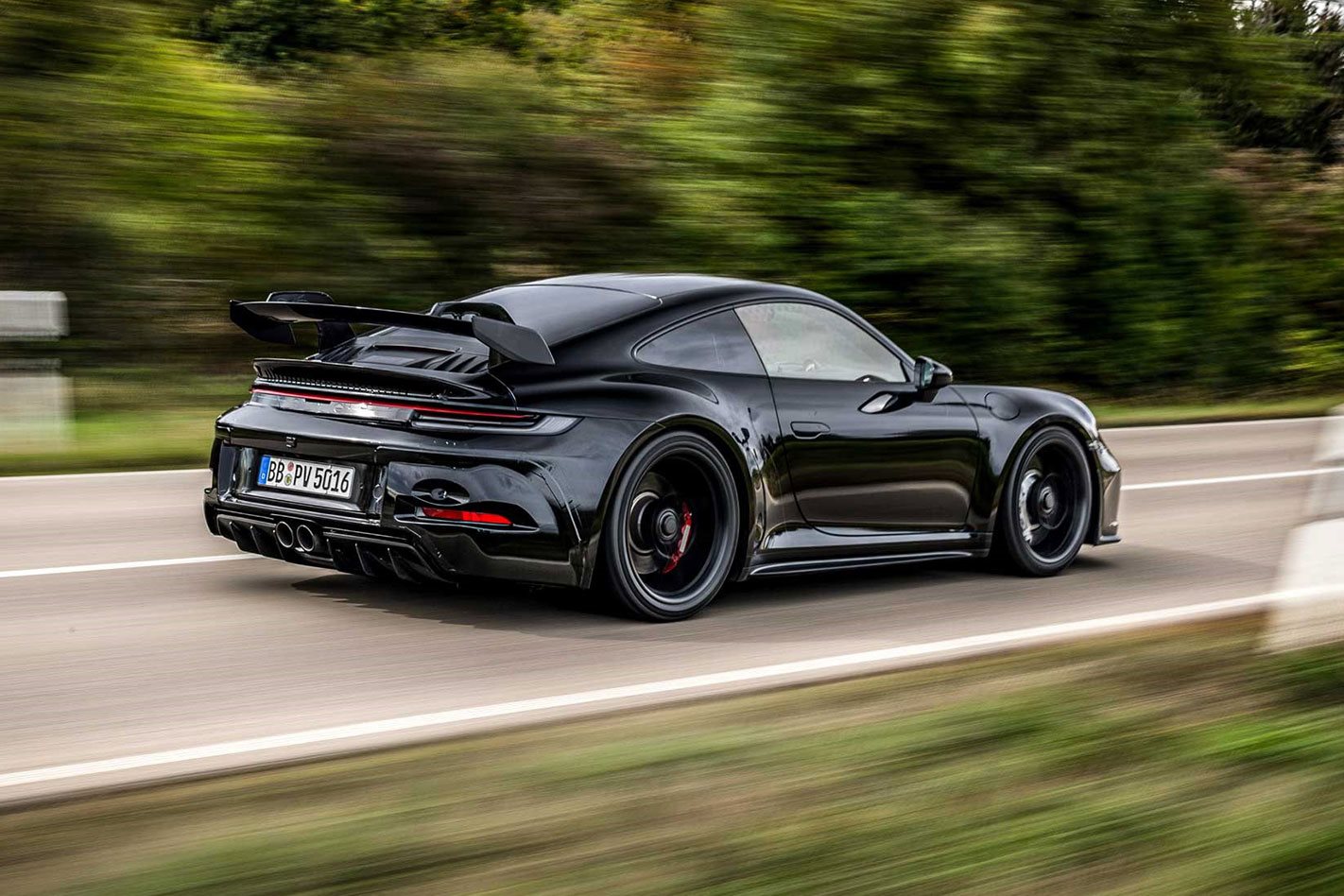
It’s more difficult to stay on top than to get there, so they say.
Each successive 911 GT3 since the very first one in 1999 has been somehow better than the last and the outgoing 991.2 model is still one of the most immersive driver’s cars in the world.
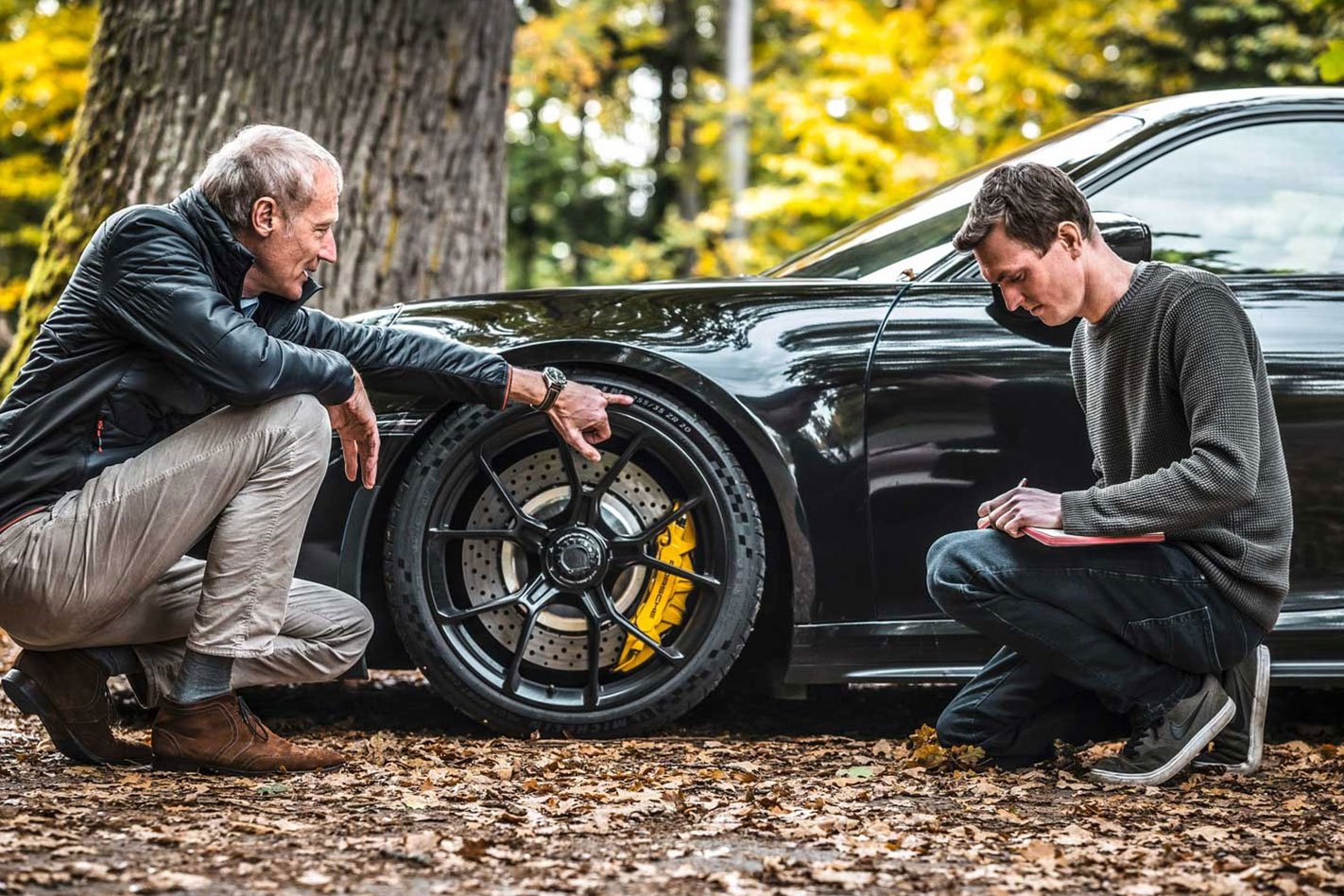
We’re at Porsche’s secretive Weissach engineering centre where GT division boss Andreas Preuninger and his team are putting the finishing touches to the 2021 911 GT3.
Aside from a first-hand briefing, we’re also here to experience the GT3 at even firster-hand: out on the road in the passenger seat wheel of a prototype in close-to-production spec, with Preuninger at the wheel.
The basics
The new GT3 will be revealed to the world undisguised early in 2021.
Pricing is not yet confirmed but will be “a little bit more” than the previous car, Preuninger says, in line with usual inflation from one generation to the next.
The new 992 platform means overall dimensions have inflated too. It’s a bigger car than before, yet the new GT3 weighs the same as the last one – no small achievement.
Kerb weight is 1340kg, or thereabouts. The new platform brings its own benefits in extra stiffness, wider tracks and larger wheel wells: 21-inch rear tyres are now standard (they had to be engineered into the previous GT3 RS).
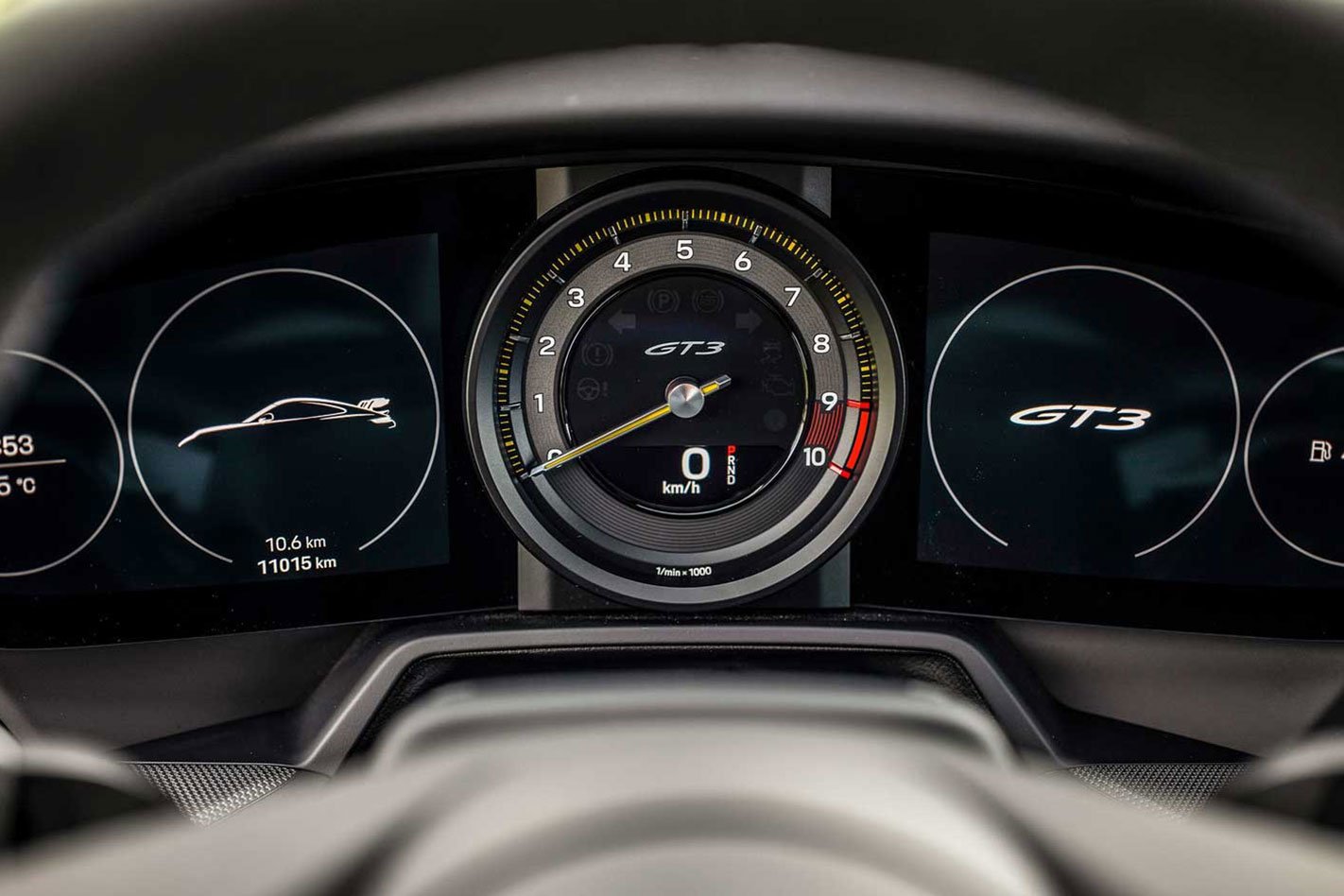
It develops around 8kW more than before, for a total around the 375kW mark.
Happily, there’s still not a turbocharger in sight.
For the first time in a road-going production 911, the front suspension is by double wishbones rather than MacPherson struts, taking its design from the 911 RSR Le Mans car.
“That brings advantages in camber stiffness and precision,’ explains Preuninger. ‘Our mid-engined competitors have had double wishbones for a long time but it wasn’t possible on the old 911 platform.”
Let’s meet the prototype
Aside from the camera-shy matte black wrap, camouflage is minimal, other than the fake rear bumper; the production version will be easier on the eye.
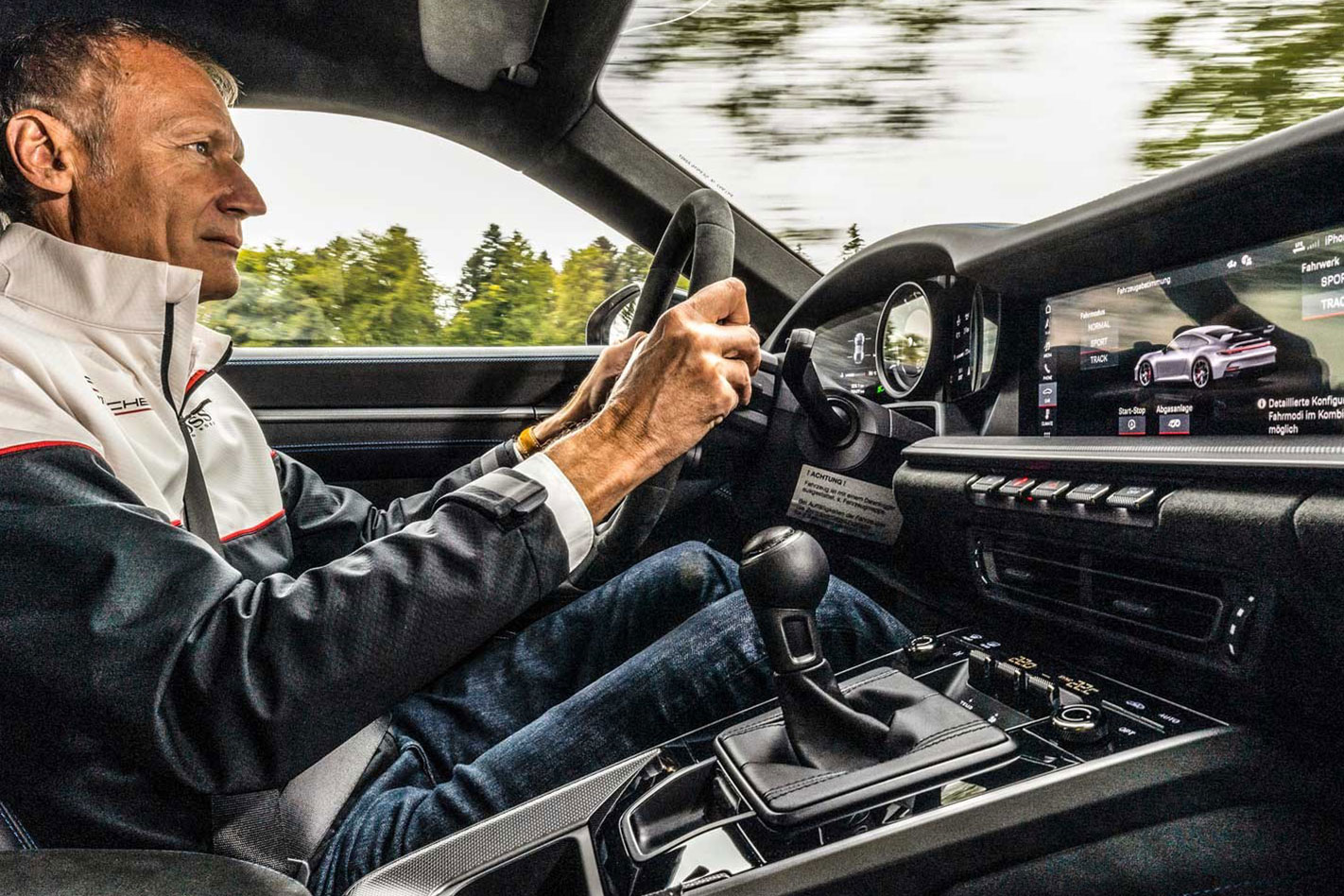
This car is fitted with the double-clutch PDK gearbox (a lighter development of the unit fitted to the previous car).
It’s an option: a six-speed manual will still be standard equipment. As before, the harder-core GT3 RS version which will follow a little later will be PDK-only.
But not paddleshift-only. Spec PDK and the gear selector looks identical to the manual lever. You’d have to count the pedals in the footwell to be sure.
Regular PDK 911s have a square plastic blade to select drive, reverse and so on, with manual control only possible via the steering paddles, but in the GT3 you can also punch the lever back and forth to shift up and down the ’box.
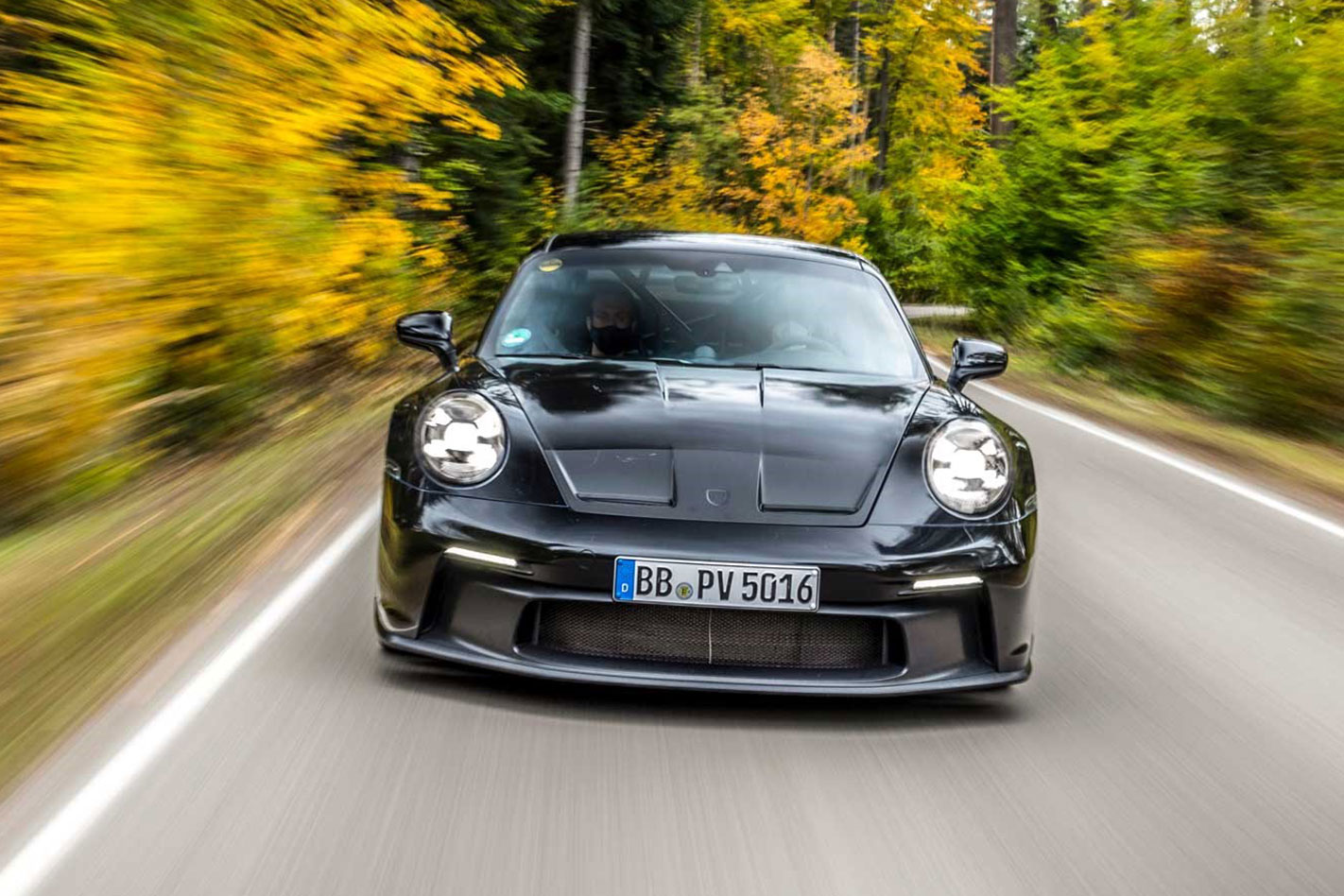
How does it feel out on the road?
Sauntering out of Porsche’s R&D base the GT3 already feels… well, like a 911 GT3.
“Our aim is that you should be able to tell in the first few metres that you are in a GT3, rather than a 911 Carrera or Turbo,” Preuninger says.
Flat-six warmed through, the road clears to a well-sighted section and the (analogue) tacho-needle pings off the 9000rpm redline (something of a GT3 USP. “People expect it,” Preuninger acknowledges).
The acceleration feels fast enough to thrill, without scrambling your senses like some modern supercars.
“In a straight line it’s not substantially quicker than the old one,” Preuninger says, matter of factly. “Why would it be? Similar power, similar weight. Six-hundred horsepower… you don’t need all that power!
“I’d rather have 100hp [75kW] less and keep it naturally aspirated.”

The standard-fit adaptive dampers are faster-reacting (and lighter) than ever before, and on tough surfaces, they work wonders. “The faster you go, the better the damping is,” AP says.
You sense this car will be more than a match for the gnarliest of roads.
Downsides? Nits are hard to pick from the passenger seat, but here goes.
Engine noise in seventh gear is rather rowdier than a regular 911, and could become tiring on a long journey.
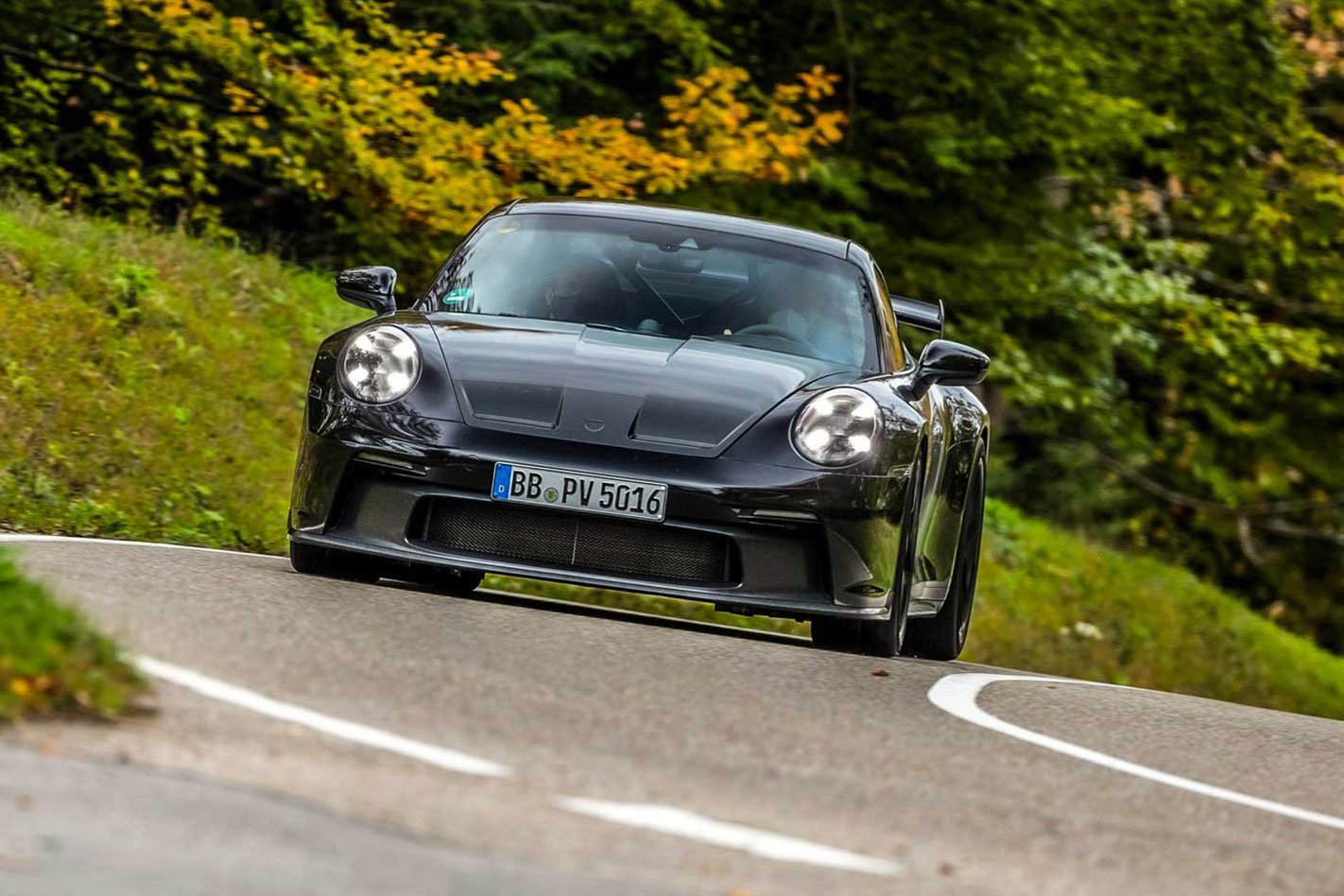
But none of these feels like a deal-breaker.
Preuninger has covered thousands of kilometres in this prototype, but is clearly enjoying driving it just as much as ever.
“At speed, it’s a zen-like meditation feeling – I don’t get quite that same feeling in any other car,” he smiles.
We’ll find out how that feels in the first half of 2021; it can’t come soon enough.



